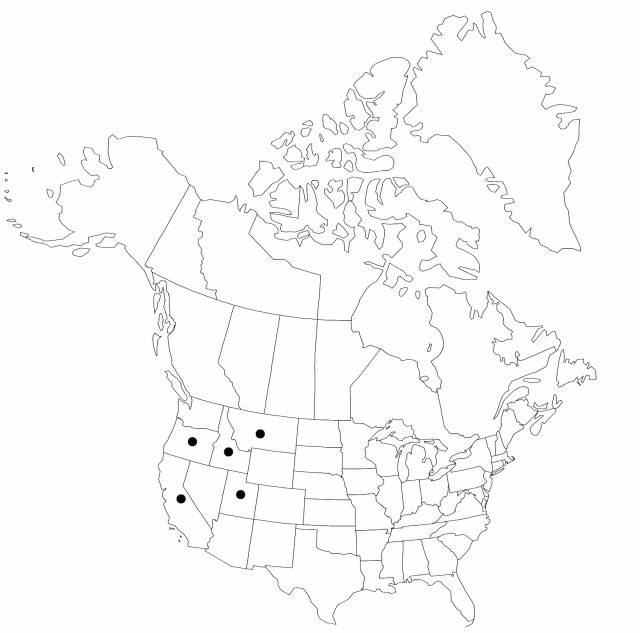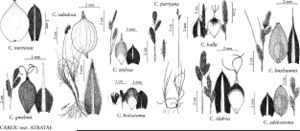Carex idahoa
Bot. Gaz. 21: 5. 1896.
Plants loosely cespitose. Culms 25–40 cm, distally scabrous. Leaves 2–5 mm wide. Inflorescences: proximal bracts shorter than inflorescences; spikes erect, separate, short-pendunculate, short-oblong or elongate, 10–25 × 5–7 mm; lateral 1–3 spikes pistillate or absent, scarcely longer than 1/2 the length of terminal spike; terminal spike gynecandrous, pistillate, or, infrequently, staminate. Pistillate scales brown or almost black, margins narrow-hyaline, lanceolate, as long as, usually longer and as wide as perigynia, midvein lighter colored than body, conspicuous, frequently raised, prominent, distally scabrous, apex acute to mucronate. Perigynia ascending, pale yellow or brown, veinless to few-veined, elliptic to obovate, 2–3 × 1.5–1.75 mm, distal margins serrulate, apex abruptly beaked, smooth; beak 0.2–0.3 mm, truncate or shallowly bidentate, serrulate. Achenes nearly filling body of perigynia.
Phenology: Fruiting Jun–Sep.
Habitat: Riparian moist meadows
Elevation: 2000–2600 m
Distribution

Calif., Idaho, Mont., Oreg., Utah.
Discussion
Of conservation concern.
Selected References
None.
